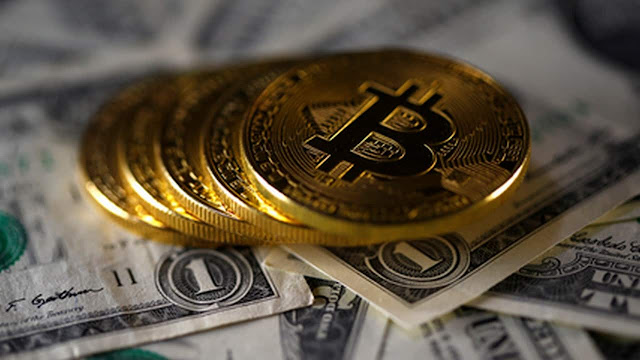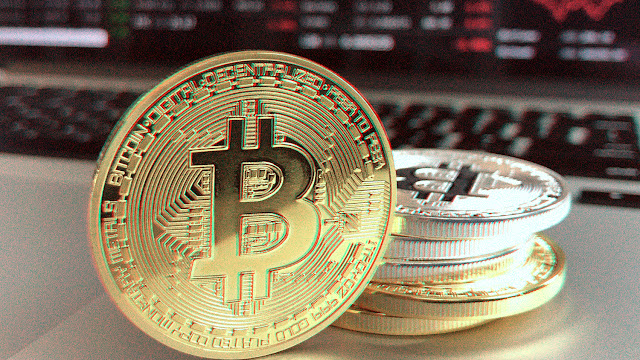Tips To Properly Protect And Secure Your Bitcoin Wallet
Bitcoin is one of the oldest and most widespread peer-to-peer payment systems; the amount of its market capitalization now exceeds that of other cryptocurrencies. Due to its immense popularity, many companies and a few individuals have already begun to integrate it as a payment system.
But there is still a threat to the security of digital wallets. Last year, ransomware like WannaCry attacked several computer systems around the world through Microsoft Windows and demanded payment of ransoms in Bitcoins. Even if Bitcoin transactions rely on the blockchain, this block-based technology that complicates the hacking of cryptocurrency information, the security of your Bitcoin wallet should not be taken lightly.
But first, let's clarify what we mean by the "Bitcoin portfolio." A Bitcoin wallet is a digital wallet where Bitcoins are stored. Obviously, there is no question of storing your Bitcoins anywhere since they contain a private key or a secret number for every Bitcoin address registered in the wallet. There are several types of Bitcoin wallets: the desktop wallet, the mobile wallet, the online wallet (or web), the hardware, or the paper wallet. But before discussing the different methods and techniques that exist to secure Bitcoin wallets, I think it is important to talk about the main problems and security threats.
First of all, it is essential to know the main threats: using false cryptocurrencies to deceive users, illegal phishing, knowledge of your phone's confidential PIN by a third party, attempts to steal your cryptographic keys, etc.
The hacker can also hack into your Bitcoin wallet using old password backups. All it needs to do is create a recovery program. Therefore, even if you change your password frequently, the security of your wallet is not guaranteed.
The Sybil attack involves a hacker blocking the transactions of all other users by trying to control the network with nodes. Users can only connect to blocks created by the hacker.
The 51% attack is usually launched in the early stages of developing a Bitcoin wallet application when the hacker has more computing power than the developer.
Other forms of attacks include slowing transactions, transaction vulnerability, DoS (denial of service) attacks, and more.
We now have a little idea of the most common threats. We also know that despite the two-way authentication processes, despite the mystery surrounding Bitcoin, and despite the lack of an intermediary, all this remains insufficient to guarantee the security of digital transactions. Let's see how to secure your Bitcoin wallets.
Hardware wallet or "offline" storage mode
One of the first steps to secure your Bitcoin wallet is to opt for cold storage, which is like storing Bitcoin values in a hardware wallet. This is called the "offline" method because it does not require connecting to the Internet. It is also less prone to piracy.
In other words: the method is similar to a form of physical storage similar to what you have with USB sticks. However, it is recommended not to cold-store large quantities of cryptocurrencies, the best thing to do is to divide Bitcoins into two heaps. On the one hand, a small amount that will be kept online for transactions, and on the other, the balance that can be stored in the "material" wallet.
Cold storage portfolios include Trezor or Ledger Nano S. However, you will have to pay up to $100 to set them up and obtain a PIN (the password used to access the contents of the wallet). You'll also get a "recovery seed" to use if you forget the PIN or malfunction. But be careful not to lose both your PIN and your recovery seed: you would be exposed to big problems.
Create one or more backups for your portfolio
To be safe in the event of a loss of your portfolio or data, experts recommend creating backups. You must then back up your entire Bitcoin wallet to protect it from computer failures and human error. The backup would include cold-stored Bitcoins and the small amount of Bitcoins you store for your transactions. In case of theft, you can recover your wallet if it is encrypted.
Save your entire portfolio. Some wallets contain private keys hidden inside. By saving only these private keys, and not your entire portfolio, you may not be able to get all your funds back.
Don't forget to encrypt your backups, as funds stored online are highly coveted. Once your computer system is connected to the Internet, it becomes vulnerable if it is not properly secured.
Avoid saving your Bitcoin wallet data in one place. Multiply backup locations so you can easily retrieve your data in the event of a loss.
Make regular backups to ensure that all recent Bitcoin addresses and newly created Bitcoin addresses are included in the backup. You'll be relieved to have thought about it if your hardware crashes or you need to reformat your computer.
Encrypt your Bitcoin wallet
To add an extra layer of security, you can encrypt your Bitcoin wallet. The operation requires the use of a secret sentence that will allow you to lock your crypto-cagnotte. This will make it much harder for hackers to get their hands on the contents of your wallet... unless you know your secret phrase.
If you're doing the Bitcoin transaction from a mobile device or laptop, encrypting your wallet is all the more essential if you're connected to the Internet.
Strong password
You probably already know this, but if you don't, we remind you that your password must be very strong. Combine capital letters, numbers and special characters, and don't store your password anywhere.
Don't forget your password
Never forget your password: you'd have a hard time recovering the lost money. Bitcoin doesn't really offer a password recovery procedure. Then make your memory work!
Update the software regularly
Software updates are one of the most common security measures. Use the latest version of Bitcoin software, regardless of which Bitcoin customer chooses. The updated software will incorporate the latest security patches. It will also protect the functionality of your portfolio. If your Bitcoin wallet is not updated, you become a prime target for hackers and other phishing pros.
Also, remember to keep the devices where all your vital data is stored, and don't forget to sign up for a maintenance service for these devices.
Opt for multi-signature
The multi-signature feature is one of the essential steps to protect and secure your Bitcoin wallet. What is it? Multi-signature involves having a transaction approved by a minimum of three to five people (for example).
Any organization can allow access to its Bitcoin portfolio, but the withdrawal of funds can only be done if the transaction is signed by three to five people. With the multi-signature feature, the Bitcoin wallet allows the user to have control of their money and prevent theft.
Two-factor authentication
Two-factor authentication (2FA) is one of the techniques used to secure a Bitcoin wallet. Before allowing access to the portfolio, the 2FA requires two authentication information, making it an ideal technique. What for? Even if a third party guesses or seizes your password, that person won't be able to access your wallet without the other factor.
To set up two-factor authentication on your portfolio, there are several solutions available to you. First Google Authenticator. The Google authentication app uses a six-digit number that changes every minute, but you're always aware of. Another option is biometrics, which has become very popular and requires you to donate your fingerprints. You can choose one or the other of the options, depending on what's right for you. Beware, not all portfolios offer 2FA.
Other recommended methods
We recommend several other ways to secure your Bitcoin wallet. Here's a checklist that might be useful:
Be very careful when you open websites and emails. Today, some phishing emails are frequently sent via Google Ads. Check the addresses and domain names of these messages. Prefer to use an email address that is not public for your crypto-transactions. Also be careful when connecting to the Internet with WiFi (especially on public WiFi networks).
Turn off automatic updates related to your Bitcoin wallet to prevent software updates from launching without your permission. Think about it to prevent bugs from weakening your system and risk losing all your vital data. Wait a few days after an update is released to check for bugs.
Check for the SSL security mark in your web browser's address window. This security sign indicates that your browser is encrypted. Websites visited should always start with the HTTPS prefix.
Check the sender's address two or three times before sending the payment. A hacker can hack the address and use the copy-paste option to send the money to another address. The best solution is to send a very small amount first, and then once the shipment is verified, you can send a larger amount.
Conclusion
We all know that today's hackers are clever aces of technology. With its growing popularity, Bitcoin has experienced a number of incidents and thefts. Here we will mention the most striking.
In June 2011, hackers lost about $500,000 to a Bitcoin user. Similarly, in March 2012, hackers managed to get their hands on nearly 46,703 bitcoins by attacking the Linode web hosting platform.
We must therefore remain vigilant and keep our systems and software up to date. Let's not forget to store Bitcoin values safely, create backups and encrypt our data.


Comments
Post a Comment